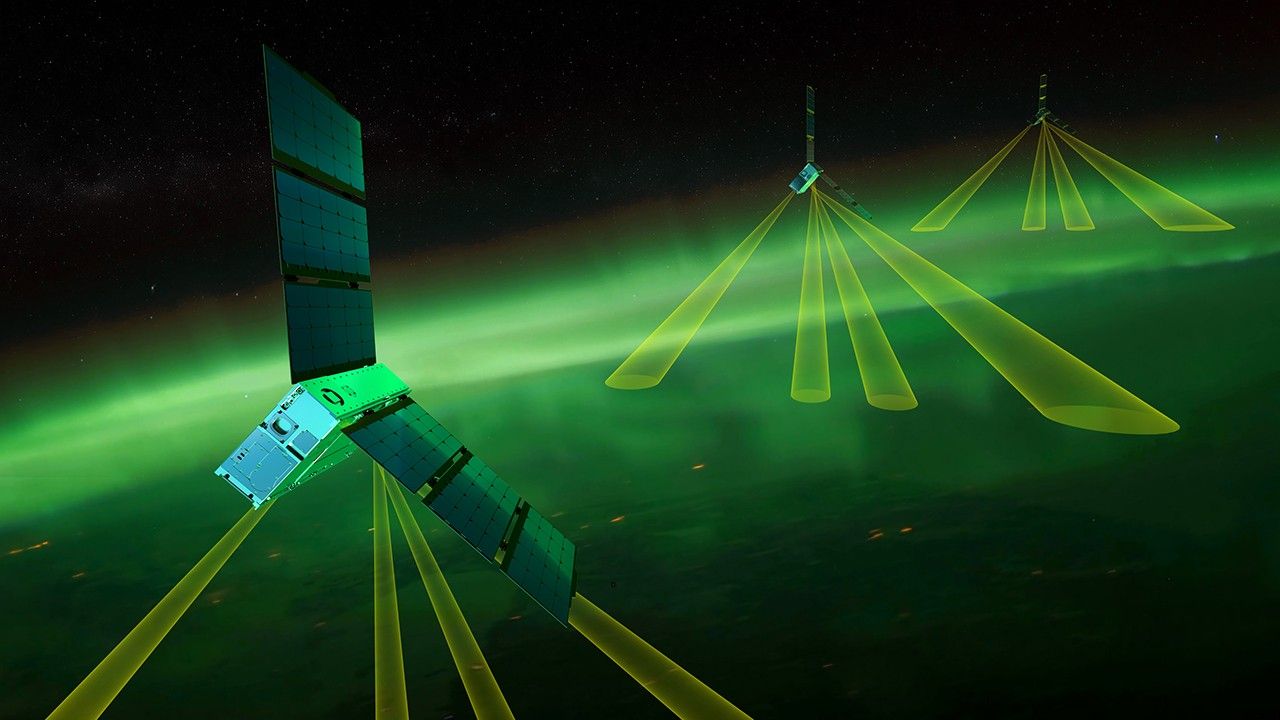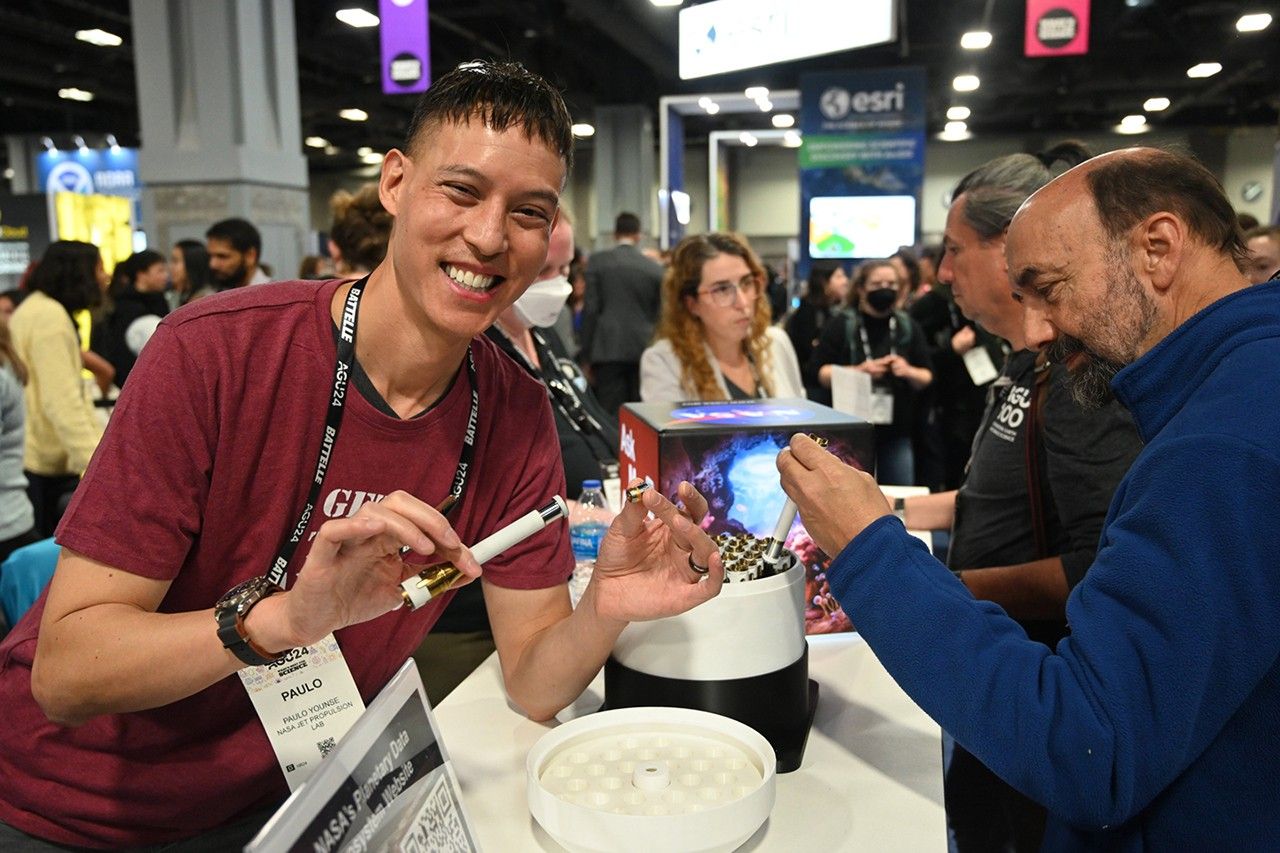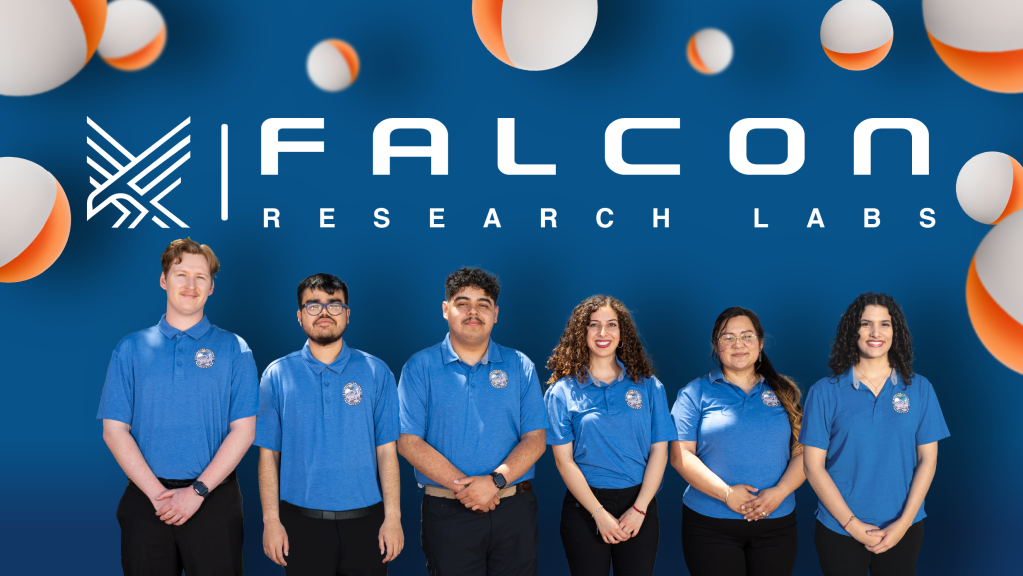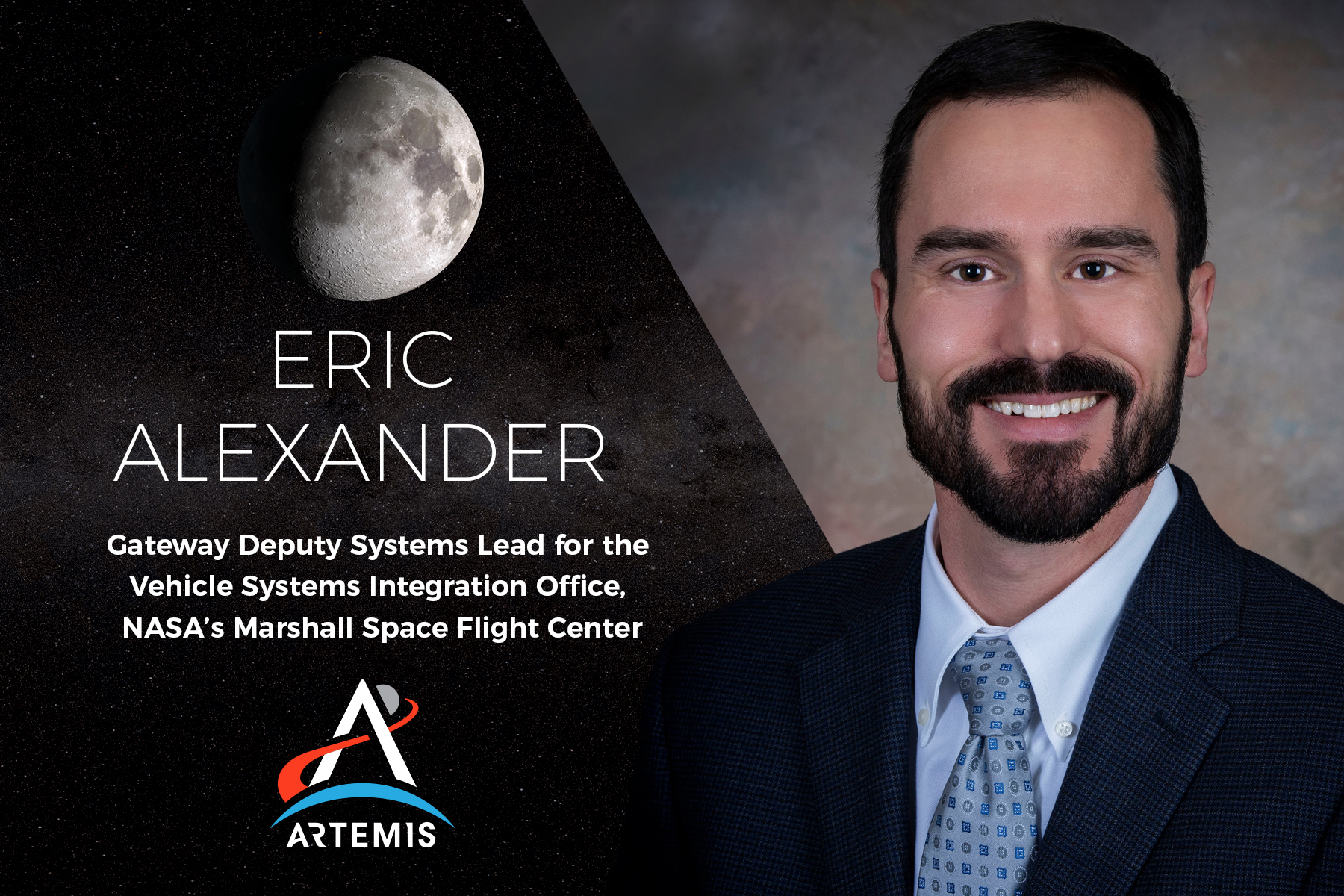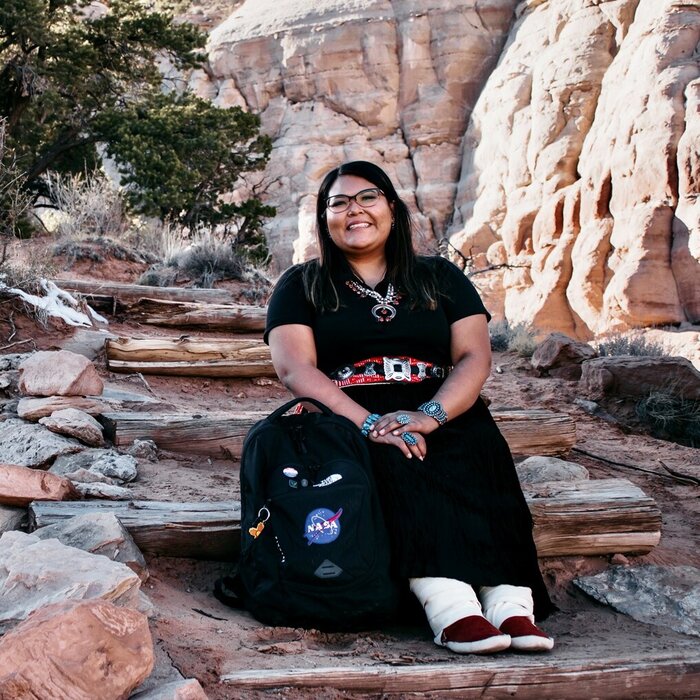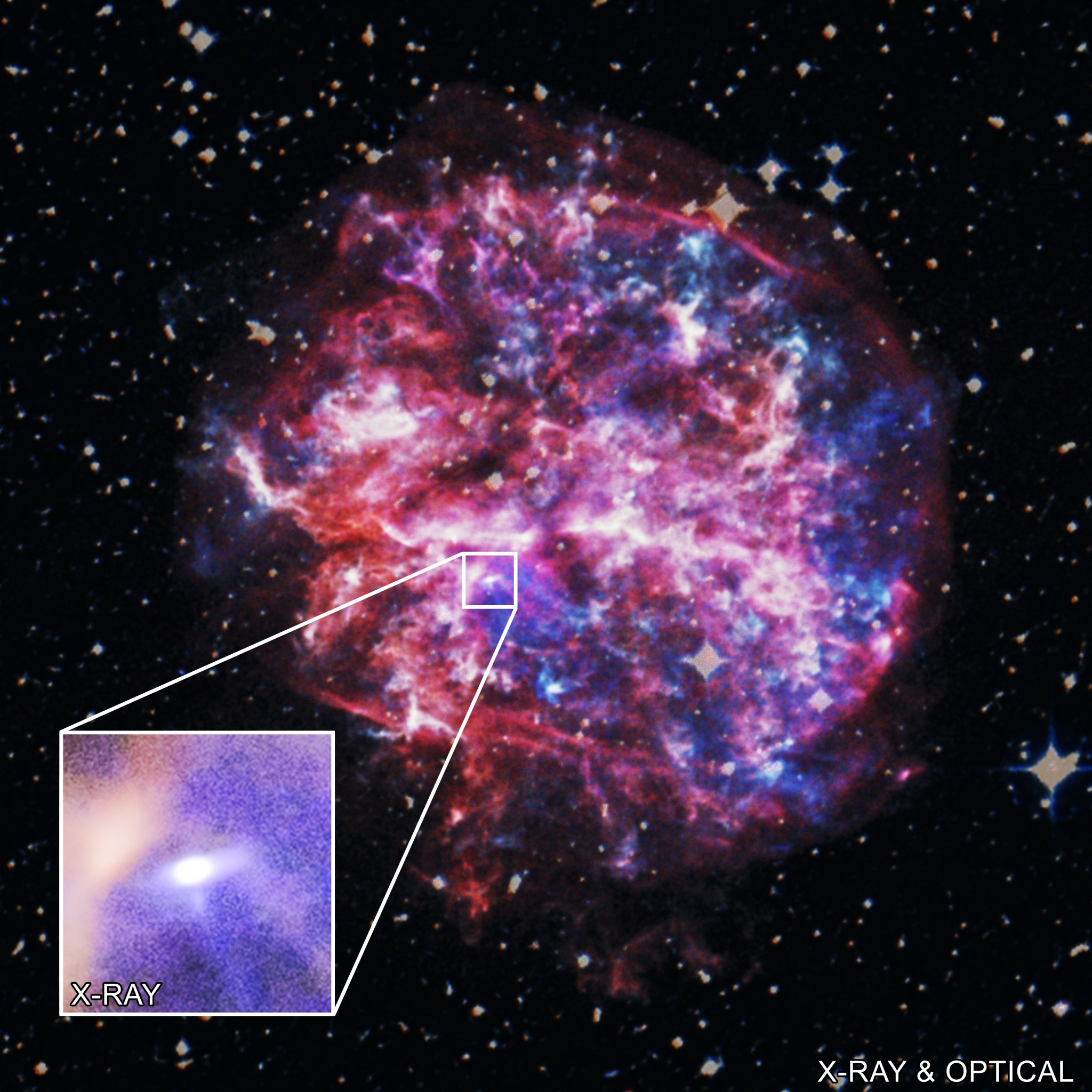In This Week’s Star
- Artemis I Rocket, Spacecraft return to Vehicle Assembly Building at Kennedy
- I Am Artemis: Eric Alexander
- Navajo Intern Engineer Hopes to Inspire Native American STEM Students
- NASA’s Chandra Catches Pulsar in X-ray Speed Trap
- Cygnus Resupply Spacecraft Departing Space Station Highlighted on ‘This Week at NASA’
Artemis I Rocket, Spacecraft return to Vehicle Assembly Building at Kennedy
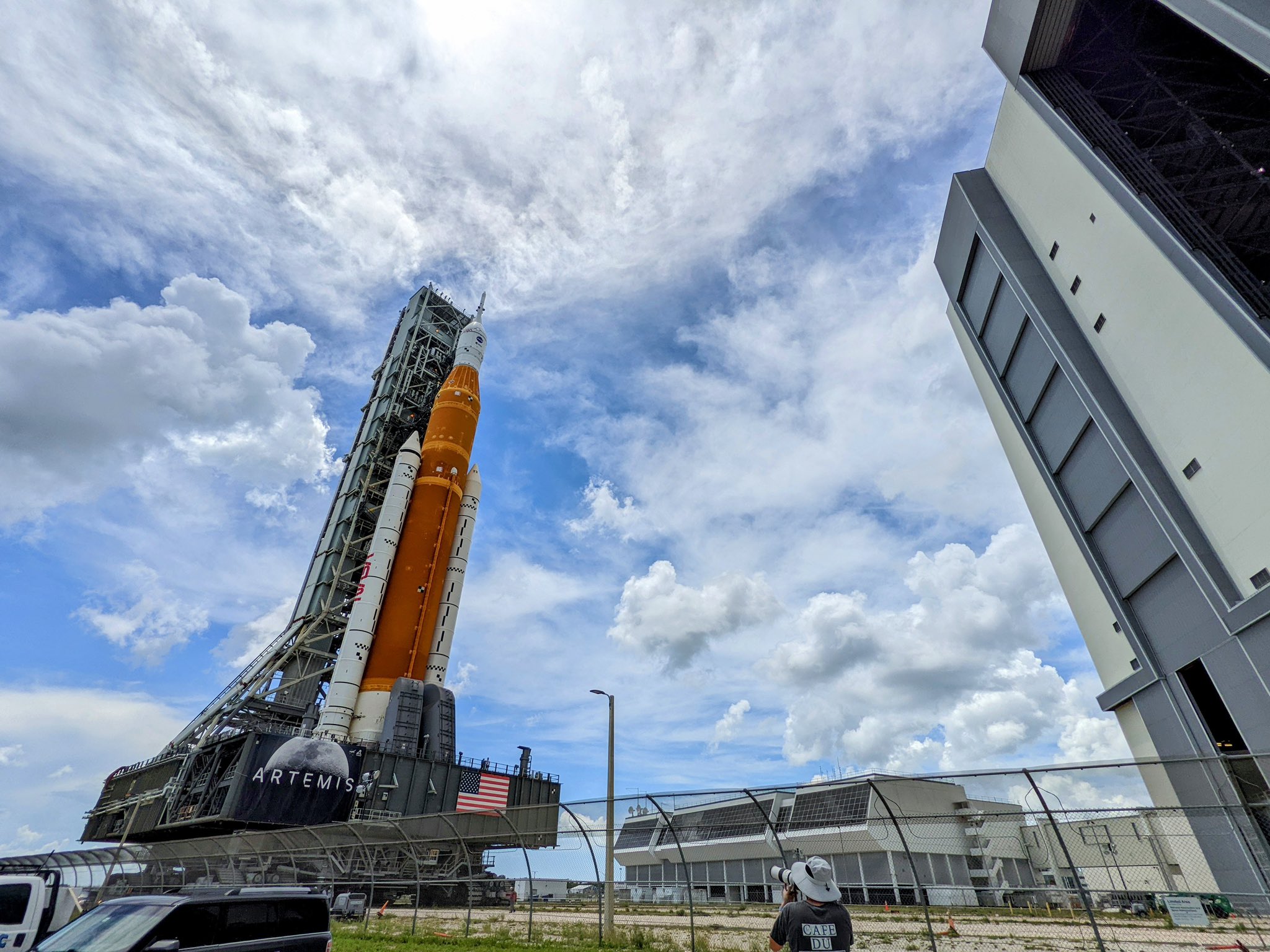
At approximately 1:30 p.m. CDT on July 2, NASA’s Space Launch System (SLS) rocket and Orion spacecraft for the Artemis I mission were firmly secured inside the Vehicle Assembly Building at Kennedy Space Center. The 4-mile journey from Launch Pad 39B began that morning at 3:12 a.m. Over the next several days, a team will extend work platforms to allow access to SLS and Orion. In the coming weeks, teams will replace a seal on the quick disconnect of the tail service mast umbilical and perform additional checkouts and activities before returning to the pad for launch. The journey previously was expected to begin just after midnight July 1 but was moved due to weather forecasts. Teams completed the wet dress rehearsal test campaign for Artemis I on June 20. NASA plans to return the mega Moon rocket to the pad for launch in late August and will set a specific target launch date after replacing hardware associated with the leak. (NASA/Madison Tuttle)
I Am Artemis: Eric Alexander
Eric Alexander takes pride in his Artemis mission role to establish a long-term human presence in deep space, especially as part of a global network striving toward a common goal: advancing human spaceflight and scientific achievement for the benefit of humanity.
Based at NASA’s Marshall Space Flight Center, Alexander is the deputy systems lead for the Gateway Program’s Vehicle Systems Integration Office. Alexander’s responsibilities include working with teams at NASA and the European Space Agency to ensure all of Gateway’s essential systems work together seamlessly.
Gateway is an international collaboration to establish humanity’s first space station in lunar orbit. It will provide extensive capabilities to support Artemis missions, to include docking ports for visiting spacecraft, areas to live and work, and onboard science investigations to study heliophysics, human health, and life sciences.
“A key component of the Artemis architecture, Gateway enables different capabilities for humans in space, science, and exploration that wouldn’t be possible without Gateway’s presence,” Alexander said.
An important aspect of Alexander’s job is managing relationships and working closely with the European Space Agency, one of Gateway’s three international partners. They are making important contributions, such as the International Habitation Module, European System Providing Refueling Infrastructure, and Telecommunications Refueling Module. As the integration lead, Alexander ensures the Gateway and European Space Agency project teams are communicating effectively and exchanging important technical information.
A Denver area native, Alexander earned a Bachelor of Science in mechanical engineering from Vanderbilt University in Nashville, Tennessee, and a Master of Science in industrial and systems engineering from the University of Alabama in Huntsville. He enjoys camping, mountain biking, and hiking with his wife, Kim, and two sons, Eli and Nate.
Alexander is looking forward to what humanity will achieve at the Moon and beyond through the Artemis missions, an endeavor built on years of collaboration and partnership between NASA and international partners.
“Seeing the Artemis missions take shape feels like the beginning of a new era in space exploration,” Alexander said. “For me, there is a tremendous sense of accomplishment personally and as part of a global team of NASA and our partners.”
Navajo Intern Engineer Hopes to Inspire Native American STEM Students
As an American Indian College Fund ambassador and a Navajo engineer, Nylana Murphy aims to demonstrate to native students that the “world is for (them).”
Murphy first gained interest in NASA while learning about internships during the American Indian Science Engineering Society National Conference, a three-day event focused on educational, professional, and workforce development for indigenous peoples of North America and the Pacific Islands.
Following the conference, the Minority University Research and Education Project for American Indian and Alaska Native STEM Engagement, which seeks to increase engagement in the science, technology, engineering, and math fields through authentic NASA experiences, helped Murphy with a summer internship offer.
Murphy used her networking skills to secure two additional NASA internships in the additive manufacturing research lab at NASA’s Marshall Space Flight Center.
“An internship isn’t just a job – it’s a foundation,” Murphy said “A foundation built for one’s success. My internships have helped me get to where I am. Without the great opportunity of hands-on communication, I wouldn’t be in the direction of aerospace.”
While working on the additive manufacturing project, Murphy gained hands-on technical experience within a team at the agency. During her internship, she also used 3D printing for Inconel 625 powder, which plays a significant role in aerospace utility tasks.
Along with her part-time internship, Murphy juggled life as a full-time student at Navajo Technical University, pursuing her degree in mechanical engineering with a concentration in additive manufacturing.
Murphy hopes to use her degree and skill set to continue exploration and to inspire more Native American students in the world of STEM and NASA.
“There is a career for everyone, where their dreams can become reality,” Murphy said. “With a focus on education and the help of other technologically inquisitive native students, those dreams will become a reality.”
For more information on NASA’s internship programs, visit here. For more features on NASA interns, visit here.
NASA’s Chandra Catches Pulsar in X-ray Speed Trap
A young pulsar is blazing through the Milky Way at a speed of over a million miles per hour. This stellar speedster, witnessed by NASA’s Chandra X-ray Observatory, is one of the fastest objects of its kind ever seen. This result teaches astronomers more about how some of the bigger stars end their lives.
Pulsars are rapidly spinning neutron stars that are formed when some massive stars run out of fuel, collapse, and explode. This pulsar is racing through the remains of the supernova explosion that created it, called G292.0+1.8, located about 20,000 light-years from Earth.
“We directly saw motion of the pulsar in X-rays, something we could only do with Chandra’s very sharp vision,” said Xi Long of the Harvard and Smithsonian Center for Astrophysics in Cambridge, Massachusetts, who led the study. “Because it is so distant, we had to measure the equivalent of the width of a quarter about 15 miles away to see this motion.”
To make this discovery, researchers compared Chandra images of G292.0+1.8 taken in 2006 and 2016. From the change in position of the pulsar over the 10-year span, they calculated it is moving at least 1.4 million miles per hour from the center of the supernova remnant. This speed is about 30% higher than a previous estimate of the pulsar’s speed that was based on an indirect method – measuring how far the pulsar is from the center of the explosion.
The newly determined speed of the pulsar indicates that G292.0+1.8 and its pulsar may be significantly younger than astronomers previously thought. Xi and his team estimate that G292.0+1.8 would have exploded about 2,000 years ago as seen from Earth, rather than 3,000 years ago as previously calculated. Several civilizations around the globe were recording supernova explosions at that time, opening up the possibility that G292.0+1.8 was directly observed.
“We only have a handful of supernova explosions that also have a reliable historical record tied to them,” said co-author Daniel Patnaude, also of the Harvard and Smithsonian Center for Astrophysics, “so we wanted to check if G292.0+1.8 could be added to this group.”
However, G292.0+1.8 is below the horizon for most Northern Hemisphere civilizations that might have observed it, and there are no recorded examples of a supernova being observed in the Southern Hemisphere in the direction of G292.0+1.8.
In addition to learning more about the age of G292.0+1.8, the research team also examined how the supernova gave the pulsar its powerful kick. There are two main possibilities, both involving material not being ejected by the supernova evenly in all directions. One possibility is that neutrinos produced in the explosion are ejected from the explosion asymmetrically, and the other is that the debris from the explosion is ejected asymmetrically. If the material has a preferred direction, the pulsar will be kicked in the opposite direction because of the principle of physics called the conservation of momentum.
The amount of asymmetry of neutrinos required to explain the high speed in this latest result would be extreme, supporting the explanation that asymmetry in the explosion debris gave the pulsar its kick. This agrees with a previous observation that the pulsar is moving in the opposite direction from the bulk of the X-ray-emitting gas.
The energy imparted to the pulsar from this explosion was gigantic. Although only about 10 miles across, the pulsar’s mass is 500,000 times that of Earth, and it is traveling 20 times faster than Earth’s speed orbiting the Sun.
“This pulsar is about 200 million times more energetic than Earth’s motion around the Sun,” said co-author Paul Plucinsky, also of the Harvard and Smithsonian Center for Astrophysics. “It appears to have received its powerful kick just because the supernova explosion was asymmetric.”
The true speed through space is likely to be higher than 1.4 million miles per hour because the imaging technique only measures motion from side to side, rather than along our line of sight to the pulsar. An independent Chandra study of G292.0+1.8 led by Tea Temim of Princeton University in New Jersey suggests that the speed along the line of sight is about 800,000 miles per hour, giving a total speed of 1.6 million miles per hour. A paper describing this work was recently accepted for publication in The Astrophysical Journal.
Researchers were able to measure such a small shift because they combined Chandra’s high-resolution images with a careful technique of checking the coordinates of the pulsar and other X-ray sources by using precise positions from the European Space Agency’s Gaia satellite.
The latest work by Xi and team on G292.0+1.8 was presented at the 240th meeting of the American Astronomical Society meeting in Pasadena, California. The results are also discussed in a paper that has been accepted into The Astrophysical Journal and is available online.
NASA’s Marshall Space Flight Center manages the Chandra program. The Smithsonian Astrophysical Observatory’s Chandra X-ray Center controls science operations from Cambridge, Massachusetts, and flight operations from Burlington, Massachusetts.
Cygnus Resupply Spacecraft Departing Space Station Highlighted on ‘This Week at NASA’
Northrop Grumman’s uncrewed Cygnus spacecraft’s successful departure from the International Space Station after more than four months at the orbiting outpost is featured in “This Week @ NASA,” a weekly video program broadcast on NASA-TV and posted online. Cygnus undocked from the space station June 28.
After launching from NASA’s Wallops Flight Facility, Cygnus arrived at the station in February, delivering 8,300 pounds of supplies, scientific investigations, and other cargo to the orbiting laboratory. It was the company’s 17th commercial resupply services mission to the space station for NASA.
NASA’s Marshall Space Flight Center serves as the primary space station science command post, as its payload operations team coordinates all U.S. scientific and commercial experiments.
For more information on the space station, visit here.
View this and previous episodes at “This Week @NASA” on NASA’s YouTube page.











